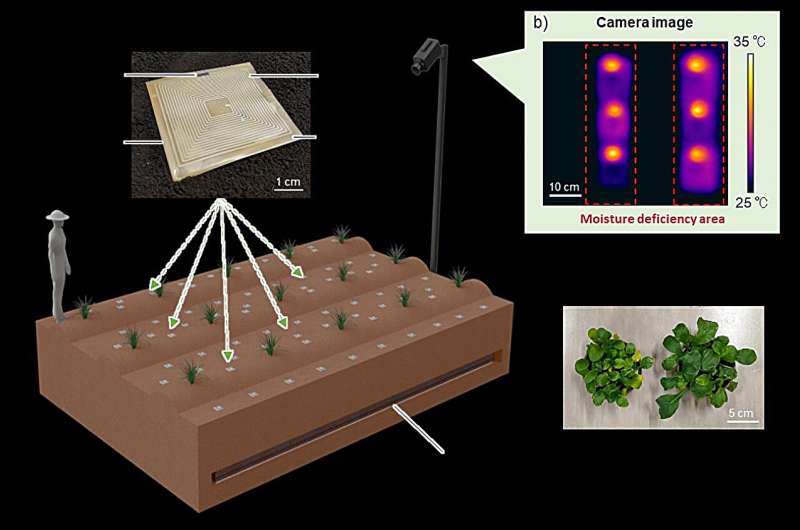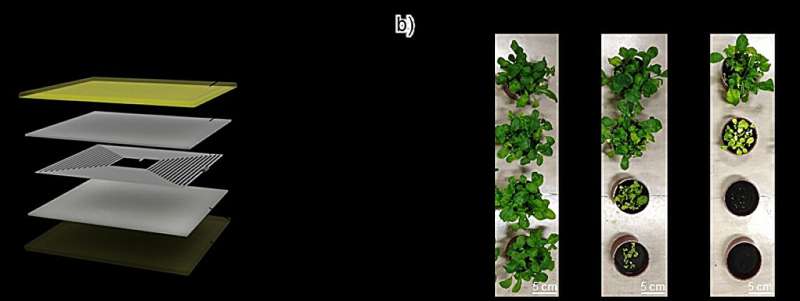This article has been reviewed according to Science X's editorial process and policies. Editors have highlighted the following attributes while ensuring the content's credibility:
fact-checked
trusted source
proofread
Sustainable smart agriculture with a biodegradable soil moisture sensor

Increasingly limited land and water resources have inspired the development of precision agriculture, which is the use of remote sensing technology to monitor air and soil environmental data in real time to help optimize crop output. Maximizing the sustainability of such technology is critical to proper environmental stewardship and cost reduction.
Now, in a study recently published in Advanced Sustainable Systems, researchers from Osaka University have developed a wirelessly powered soil moisture sensing technology that is largely biodegradable. This work is an important milestone in removing the remaining technical bottlenecks in precision agriculture, such as the safe disposal of used sensor devices.
With an increasing global population, it is imperative to optimize agricultural output yet minimize land and water use. Precision agriculture aims to meet these conflicting needs by using sensor networks to gather environmental information for properly allocating resources to cropland when and where these resources are needed.
Drones and satellites can capture much information but are not ideal for deducing humidity and soil moisture levels. For optimum data collection, moisture sensing devices must be installed at ground level at high density. If the sensors are not biodegradable, they must be collected at the end of their service life, which can be labor-intensive, rendering them impractical. Achieving both electronic functionality and biodegradability in one technology is the goal of the present work.

"Our system comprises several sensors, a wireless power supply, and a thermal camera for acquiring and transmitting sensing and location data," explains Takaaki Kasuga, lead author of the study. "The in-soil components are largely ecofriendly; composed of a nanopaper substrate, a natural wax protective coating, a carbon heater, and tin conductive lines."
The basis of the technology is that the efficiency of wireless power transmission to the sensor corresponds to the temperature of the sensor's heater and the moisture content of the surrounding soil. For example, at optimized sensor positions and angles on smooth soil, increasing the soil moisture content from 5% to 30% decreases the transmission efficiency from ~46% to ~3%. A thermal camera then captures images of the area to simultaneously collect soil moisture-content data and sensor location data. At the end of the crop season, the sensors can be tilled into the soil for biodegradation.

"We have successfully visualized areas of soil moisture deficit by using 12 sensors in a 0.4-meter by 0.6-meter demonstration field," says Kasuga. "Thus, our system works at the high sensor densities needed for precision agriculture."
This work has the potential to optimize precision agriculture for an increasingly resource-limited world. Maximizing the performance of the researchers' technology under nonideal conditions (such as irregular sensor positions and angles on rough soil), and possibly for other soil environmental metrics besides soil moisture levels, might facilitate widespread adoption by the global agricultural community.
More information: Takaaki Kasuga et al, Wirelessly Powered Sensing Fertilizer for Precision and Sustainable Agriculture, Advanced Sustainable Systems (2023). DOI: 10.1002/adsu.202300314
Provided by Osaka University





















